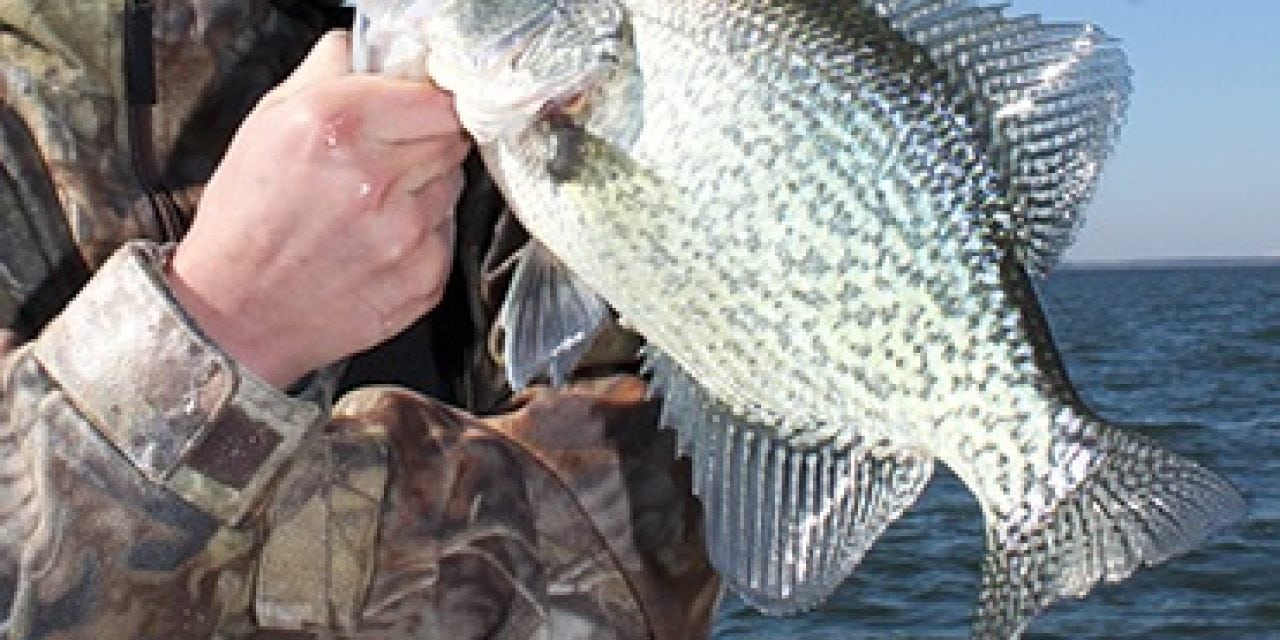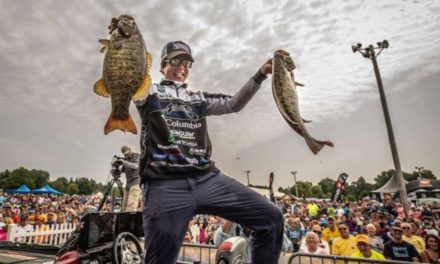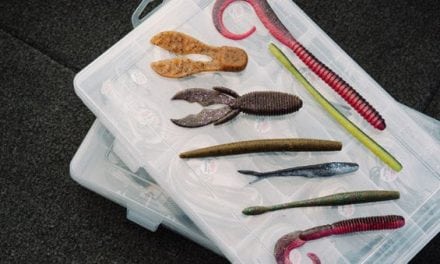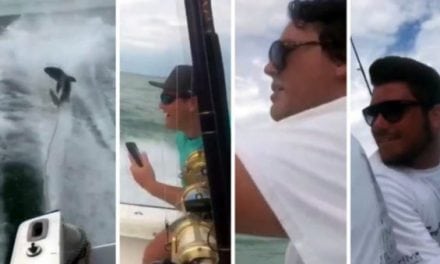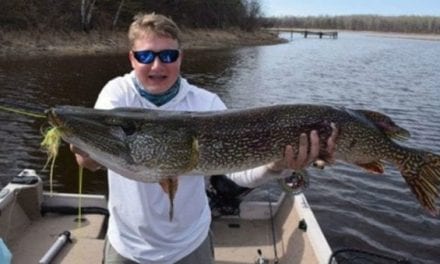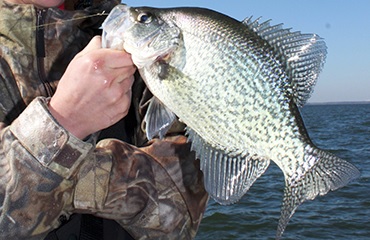 With his boat anchored 30 feet upwind of a floating marker buoy, an angler pitches a slip float rig about halfway to the buoy. Several seconds later the slip cork stands upright, with the minnow at the terminal end now swimming 12 feet beneath the float. The buoy marks the center of a big brushpile, which sits in 16 feet but has branches that extend about 4 feet off the bottom. The float, now drifting slowly in the gentle breeze, is carrying a minnow directly over the brush and the crappie in it. The angler watches and waits, knowing his float is likely to disappear before the end of the drift.
With his boat anchored 30 feet upwind of a floating marker buoy, an angler pitches a slip float rig about halfway to the buoy. Several seconds later the slip cork stands upright, with the minnow at the terminal end now swimming 12 feet beneath the float. The buoy marks the center of a big brushpile, which sits in 16 feet but has branches that extend about 4 feet off the bottom. The float, now drifting slowly in the gentle breeze, is carrying a minnow directly over the brush and the crappie in it. The angler watches and waits, knowing his float is likely to disappear before the end of the drift.
Slip floats, also called slip corks or slip bobbers, are hugely popular in the Midwest, especially among anglers who target walleyes and crappie. Somehow these highly effective tools have been largely overlooked by crappie anglers in the South and the Mid-South. However, that doesn’t make them any less well suited for presenting jigs or minnows at prescribed depths and helping anglers catch crappie.
Southern crappie make extensive use of submerged brushpiles throughout the year. They commonly migrate up into reservoir creek arms during the spring and the fall and return to the main bodies during summer and winter, and preferred depths change through the year. If there’s brush in the right zone at any time, though, they’ll congregate in it and use its branches as ambush points for feeding on shad or minnows.
Whatever the depth of the brush (or other cover or structure where you expect crappie to be holding), a slip float allows you to suspend a bait at that depth. It’s easy to make adjustments to find the magic depth (sometimes a very big deal for crappie), and when you do find the right depth, you can suspend your bait exactly at that depth every time. Your bait stays in the zone vertically whether you are fishing right next to the boat or a dock or casting to a spot, and unlike a set float, a slip float rig is easy to cast whether you’re fishing 3 feet deep or 30 feet deep.
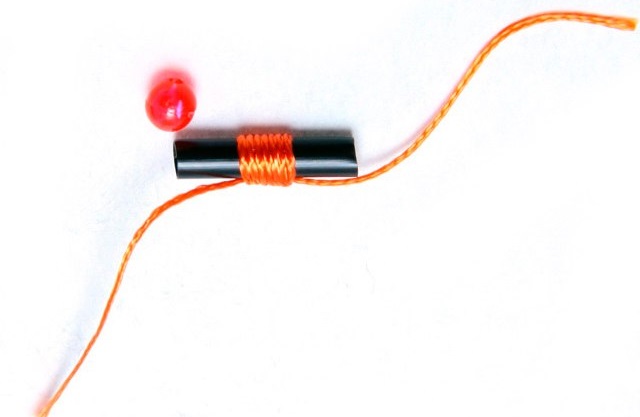 Slip Float Basics
Slip Float Basics
Slip floats come in a big range of shapes and sizes. The main common denominator is a channel for the line to run through, which runs from top of the float to the bottom. An Oval America’s Favorite Slip Model float is a good overall option for many crappie fishing applications. A Thill Crappie Cork, which can be rigged as a set float or a slip float, is also a very good option. Crappie Corks are rated for the amount of weight they are designed to support, with the rating printed on each float, so it’s easy to pick the right one for the task.
A slip cork rig begins with a bobber stop. These comes in several forms, but Thill Bobber Stops, which use a knot design and come with beads, are simple to use and work great. Just make sure you have stoppers of some sort to accompany your slip floats. The Thill Bobber Stop is a cinchable knot tied onto a little tube. Simply string the tube onto your main line, slide the knot off the tube, remove the tube, and snug the knot by pulling both string ends. You might also want to trim the tag ends just a bit. Next add your bead, which keeps the knot from sliding through the float, and then string the line through the float from top to bottom. Add a jig or a split shot and hook, and the rig is complete.
 To set a depth, slide the stopper to the same distance from the hook and pull the strings to snug the knot. If you to fish less than about five feet deep, just eyeball it. Beyond that, it’s easy to measure against your rod for any distance up to around twice the length of the rod. With a 7-foot rod, as an example, if you hold your hook at the butt of the rod, it’s 7 feet to the end eye. Therefore, the spot on the line coming off the reel that’s about a foot from the rod butt is 13 feet from the hook. Using that as a reference point, you can add several more feet fairly accurately by making two foot “pulls” off the reel, holding the stopper in place.
To set a depth, slide the stopper to the same distance from the hook and pull the strings to snug the knot. If you to fish less than about five feet deep, just eyeball it. Beyond that, it’s easy to measure against your rod for any distance up to around twice the length of the rod. With a 7-foot rod, as an example, if you hold your hook at the butt of the rod, it’s 7 feet to the end eye. Therefore, the spot on the line coming off the reel that’s about a foot from the rod butt is 13 feet from the hook. Using that as a reference point, you can add several more feet fairly accurately by making two foot “pulls” off the reel, holding the stopper in place.
Of course, wherever you set the depth is usually just a starting point. Adjust as needed to find the fish and to keep from getting hung too much if you are fishing over brush.
Slip floats work great for jigs, minnows, or jig-tipped minnows. Whatever the offering, you can drift the rig over a brushpile or other cover or structure, fish it stationary next to the boat or cast it to a spot and leave it in place. For casting applications where you don’t want the rig to drift, set up upwind or upcurrent of where you want the float to rest.
Once your offering has fallen to its spot in the water column and the float is standing tall to show that the bait is suspended, your job becomes simple. Watch carefully and set the hook when your slip float darts out of sight.
The post Slip Floats for Crappie appeared first on ODU Magazine-North America's #1 Digital Fishing Magazine.

